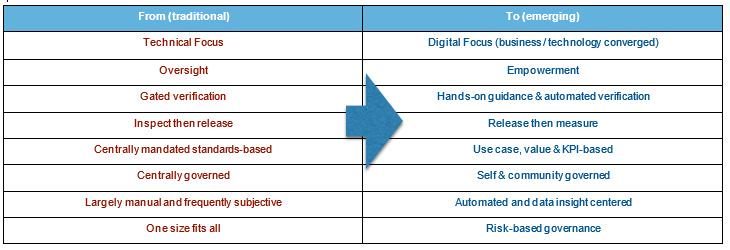POSTED : March 13, 2017
BY : Pete Clare
Categories: Business Optimization,Digital Engineering

Truth #1 – Technology governance largely deserves its tarnished reputation
Truth #2 – Governance is needed more than ever and is currently being disrupted
Disruption? This article will start to walk you through how it’s being disrupted and what you need to know.
Typical promises made by traditional technology governance practices include risk management, data protection, legal compliance, standards compliance, access management, reusability, etc. In today’s world, it remains hard to argue with this value promise. The challenge is that typical governance practices are inherently at odds with the direction of the business world.
Traditional approaches to governance simply cannot keep up with the rapid evolution being forced on companies by unprecedented pressure from:
As companies scramble to remain relevant digital transformation has become essential, the lines between business and IT are vanishing, and APIs are now the primary means of leveraging productized business capabilities. This movement is one of the drivers behind technology governance disruption.
Today’s business challenges continue to lead us toward more, smaller, cross-functional and largely autonomous teams… each focused on independent delivery and innovation. Add to this the adoption of cloud (platforms & infrastructure), APIs, & continuous delivery tooling and a few realities emerge:
The result… the risks of irrelevancy & disruption frequently lead businesses to abandon governance in favor of pace. However, the risks associated with ungoverned change are amplified significantly by the increase in internal change agents and speed.
Where does this leave us?
Today’s emerging governance practices are based on a different set of fundamentals:

Let’s take a closer look at a few key distinctions:
To be clear, I am not at all suggesting that there is no place for traditional governance practices. I am saying that unless you are dealing with very high levels of risk (e.g. space travel) or certain legal / compliance contexts you should be transforming your technology governance practices from an impediment to a business decision amplification engine.
Learn more about how to build APIs for consumers, not systems.
Tags: API, API design, API Governance, API management, API productization, Data Governance, Governance